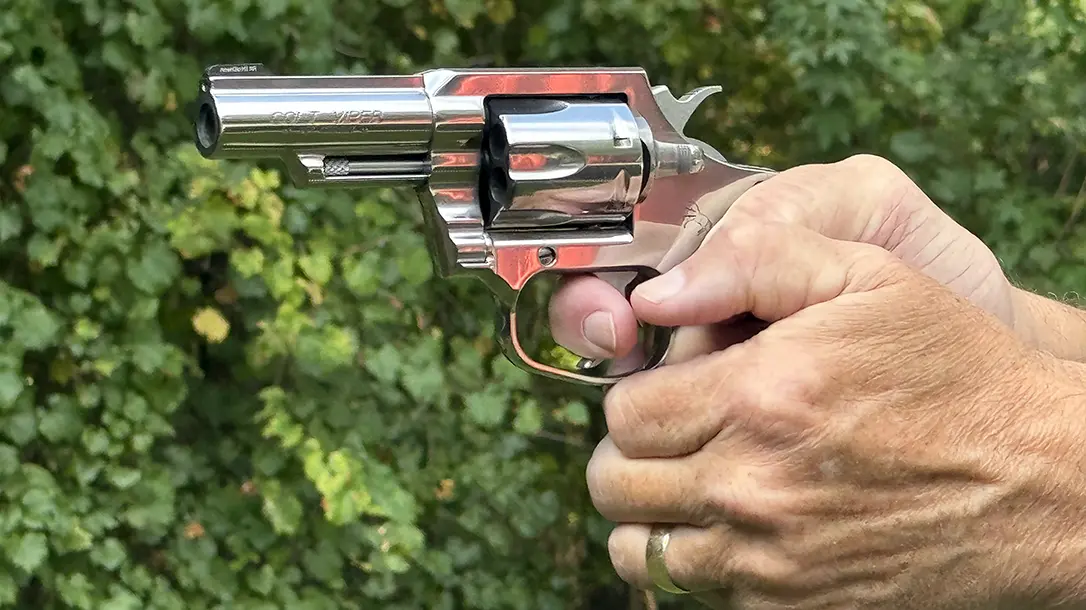I don’t think it is an exaggeration to say that Colt has been seriously investing in the revolver market. In the past four or so years, they have reintroduced the Python, Anaconda, Cobra and the King Cobra. The line would not be expanding if there was no market demand. Revolvers are being rediscovered by the shooting public. And, that is a great thing for old guys like myself! Shooting the Colt Viper recently only reaffirmed those notions.
Shooting the Colt Viper – Tougher than Ever!
In case you haven’t noticed, all of Colt’s revolvers are names for snakes. The newest snake is the Colt Viper. The original Viper was only made in 1977 and, reportedly, only 4,000 guns were made. This makes them rare, expensive, and very collectable. Unlike the original Viper, which had an alloy frame, the new revolver is constructed of stainless steel. It is based on the D-size frame, is chambered in a .357 Magnum and, like all Colts, has a six-shot capacity. The new Viper is currently offered with either a 4.25- or a 3-inch barrel. Both models have fixed sights with the front sight being easily replaced by simply loosening a set screw.
The Viper makes extensive use of the improvements in modern manufacturing technology that Colt launched with the Python. This process eliminates most of the hand fitting, thus improving quality without increasing labor cost. The Viper is basically the same pistol as the King Cobra. The difference between the two models is the half-lug ejection housing. This reduces weight and gives the Viper a very sleek appearance.
Advertisement — Continue Reading Below
When I received a test Viper from Colt, I had high expectations. The new Viper did not disappoint. I continue to be impressed with the fit and finish on all the new Colt revolvers. The frame and barrel are evenly polished and almost look like a nickeled finish. The Viper had no external machine marks or external flaws in the finish.
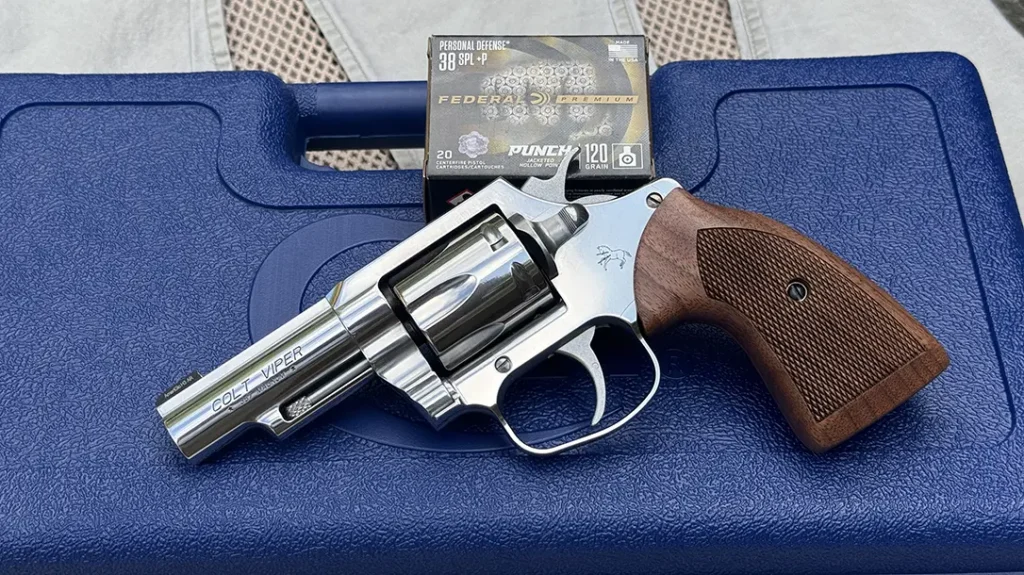
Viper Details
As with the King Cobra, the Viper has an oblong and oddly shaped trigger guard. Colt explained that this shape allows for a longer trigger to improve the pistol’s action. The Viper comes with a smooth-face trigger instead of the serrated triggers found on the Python and the Anaconda. The edges of the trigger exhibit a nice radius, and at the base, the trigger measures approximately 7/32-inch. While the Viper uses a Colt leaf spring, the double-action was smooth with minimal stacking. Using my Lyman Electronic Trigger gauge, I found the Viper averaged a 9-pound double-action and a 3 pounds, 12 ounces single-action. The pull was smooth without any grit or play.
Advertisement — Continue Reading Below
The stocks are reminiscent of the 1980s Detective Specials and Cobras. They feature sides nicely checkered and with attractive grain. The stocks fit the frame relatively well and fill the sinus behind the trigger guard to reduce “knuckle bump.” They also extend past the frame and provide a full gripping surface for most shooters.
The Viper’s sights consist of a fixed square notch rear and black serrated front ramp. The top strap and top of the barrel have a matte finish to reduce glare, for an improved sight picture. A single set screw, like other Colt revolvers, retains the front sight, easily replaced by the user. This feature was key during the evaluation.
Defensive Snake with Bite
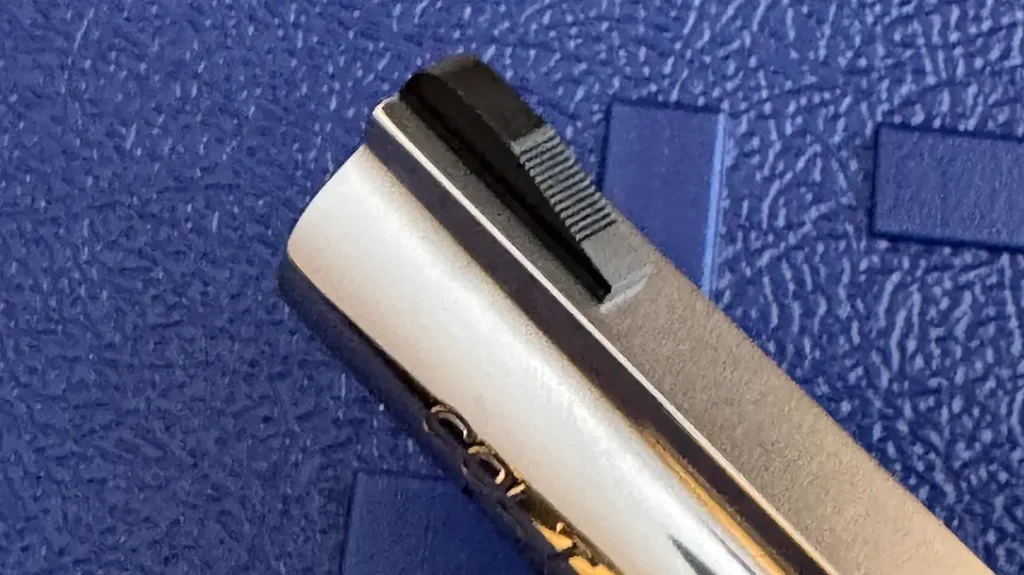
Advertisement — Continue Reading Below
I selected to test the Viper with popular personal defense loads. The chart below reflects our chronograph and accuracy testing. I used the new Garmin Xero C1 Pro Chronograph for the testing. The C1 is a radar chronograph and is about the same size as a Go Pro camera. Being a radar chronograph, it can be used in low-light environments, to include indoor ranges. It has made testing the loads significantly easier.
The Hornady Critical Defense Lite uses a 90-grain FTX bullet that is designed to have reduced recoil. Even with a velocity of 1,026 fps, the recoil out of the stainless Viper was very mild. I found that the load hits approximately 3-inch high at 10 yards. The Critical Duty 110-grain FTX is a proven performer that finds the sweet spot between bullet weight and velocity. This load shot to point of aim, and recoil was moderate. The Federal Punch .38 +P load features a 120-grain jacketed hollow point. At 1,053 fps, recoil with the Punch was stiff, but not unmanageable. Punch tended to hit approximately 1-inch high at 10 yards.
In general, I attempt to avoid shooting any pistol that is going to punish my already damaged hands. However, since the Viper is chambered in .357 Magnum, I felt obligated to test it with at least one Magnum load. I selected Hornady’s Critical Defense 125-grain FTX. With an average velocity of 1,356 fps, this load was just brutal. Recoil and muzzle flip was significant, making accurate follow-up shots very difficult. It is not a load I would recommend for any D-frame Colt.
Advertisement — Continue Reading Below
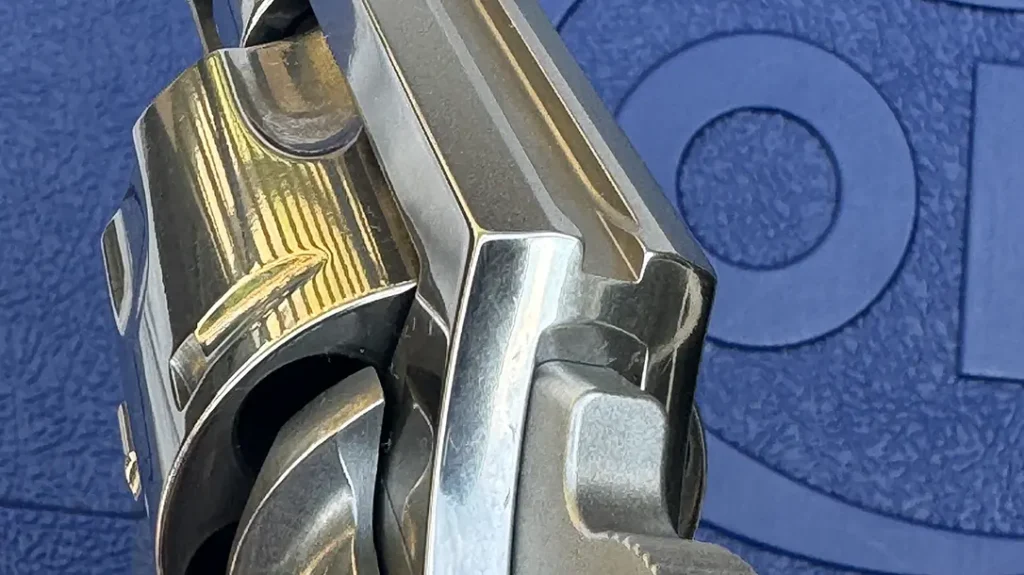
Rounds Downrange
The range sessions revealed two issues with the Viper. The first is that the left stock panel routinely prevented a clean ejection of all six empty cases. More often than not, at least one, if not two, cases lodged against the stocks during the ejection stroke. This is a pretty serious issue with a personal defense revolver. Fortunately, stocks are easily changed and there are many options. A simple solution to this issue is to replace the factory stocks with a set of Hogue stocks like those found on the King Cobra.
The second issues was with the sights. I found it difficult to pick up the black front sight ramp, especially in bright sun light. The solution was found with a call to my good friend, John Harrison of Harrison Design. John has a complete line of Harrison Design Snake Sights for all of the Colt double-action Snake revolvers. John sent me an improved ramp front sight blade that had a green Ameriglo tritium lamp and a Lumi-green ring. Installation took less than three minutes. This single change significantly improved my performance with the Viper. I have John’s sights on my 3-inch Python and found they are outstanding.
Advertisement — Continue Reading Below
As is my habit, I shot the HiTs Super Snubby Test with the Viper. For those who are not familiar with this drill, it consists of five rounds, fired from 3, 5, and 10 yards, respectively. Par time for each string of fire is 3 seconds, 5 seconds, and 8 seconds. The 3-yard-line is fired using the strong hand only, making five shots in 3 seconds spicy. The drill is normally shot on a B-8 repair center and scored using the ring values on the target.
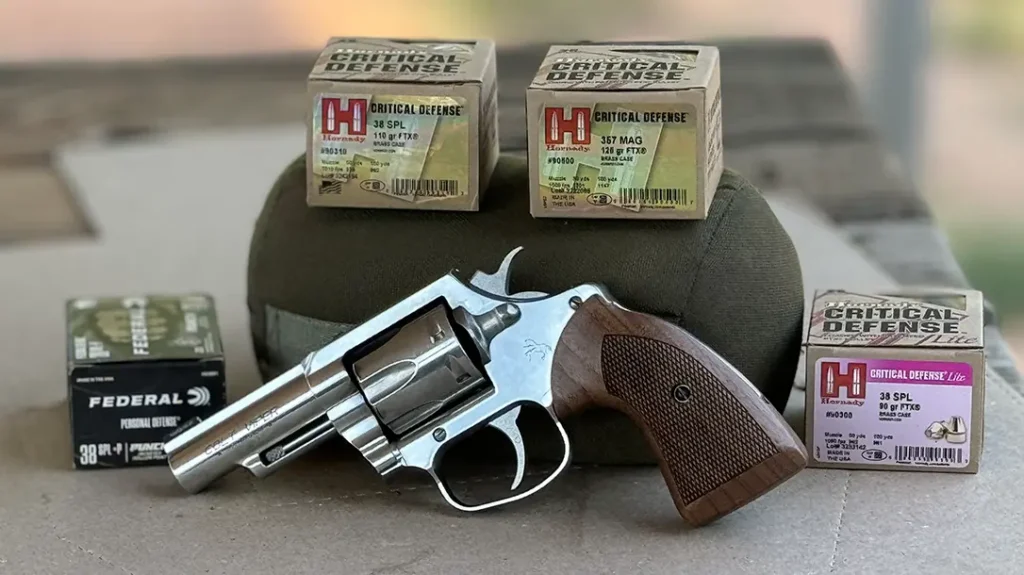
Accurate Wheelgun
However, I did not have any B-8 targets, so I shot it on a NRA qualification target. I shot the test using High Desert Cartridge Company’s plated 148-grain wadcutter. Later, I was able to superimpose the target on a B-8 to get a proper score. I shot a 142/150 with three X-ring hits. I did bust the 3-yard line time by .62 seconds. That penalty reduced my score by 2 points, giving me a 140, or 93%. I only shot the drill one time. I can say that I could not have achieved this score without the Harrison front sight blade.
Advertisement — Continue Reading Below
Many shooters don’t ever get outside of their comfort zone and never shoot little guns at longer ranges. For fun, I placed an IDPA silhouette target at 45 yards. Using High Desert .38 TMJ load, and shooting from a rest, I was able to score three “A”-zone hits and two “B”-zone hits. All shots were fired double-action and I totally lost one round. For a medium-size revolver, with fixed sights, I was pretty impressed with the Viper.
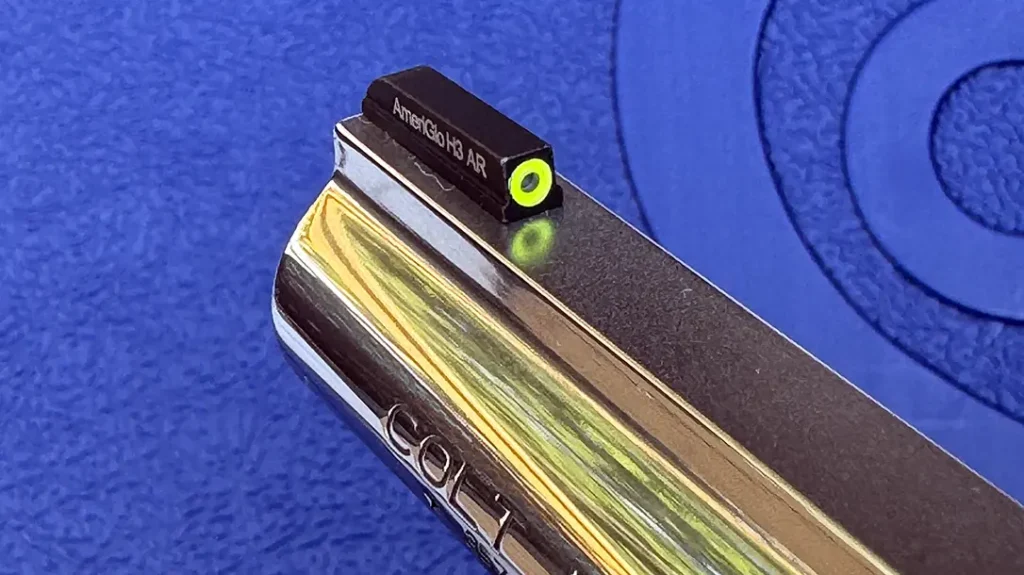
Final Shots
While I was impressed with the Viper, I was not surprised. After having evaluated several Pythons, a King Cobra, and an Anaconda, I knew the quality of revolver that Colt is producing. If I were carrying the Viper, I would definitely change the stocks. The Harrison replacement front sight is an absolute necessity. Other than those two issues, I find the Viper to be a superb medium-frame revolver. It is sleek and very capable of providing protection for you and your loved ones.
Advertisement — Continue Reading Below
Once again, Colt has hit a home run and continues to set the standard for defensive revolvers, proving the revolver is alive and well in 2024 and beyond!
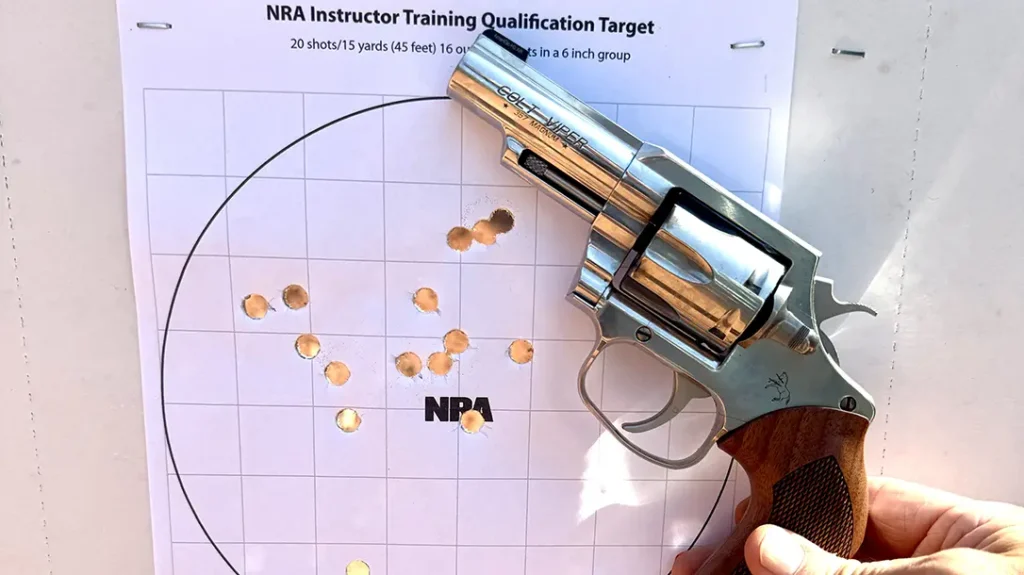
For more information, visit colt.com.
Advertisement — Continue Reading Below
Colt Viper Shooting Results
| Manufacturer | Caliber | Bullet | Average | Accuracy |
| Hornady Critical Defense Lite | .38 Special | 90-grain FTX | 1,026 fps | 1.5 inches |
| Hornady | .38 Special | 110-grain FTX | 979 fps | .75-inch |
| Federal Punch | .38 Special +P | 120-grain JHP | 1,053 fps | 1.9 inches |
| Hornady Critical Defense | .357 Magnum | 125-grain FTX | 1,356 fps | 2.75 inches |
Colt Viper Specs
- Caliber: .357 Magnum/.38 Special
- Capacity: 6 rounds
- Frame/Barrel/Cylinder: Stainless Steel
- Barrel Length: 3 inches (tested)
- Front Sight: Serrated Black Ramp
- Rear Sight: Square Notch Fixed
- Trigger Action: Single-Action/Double-Action
- MSRP: $999
